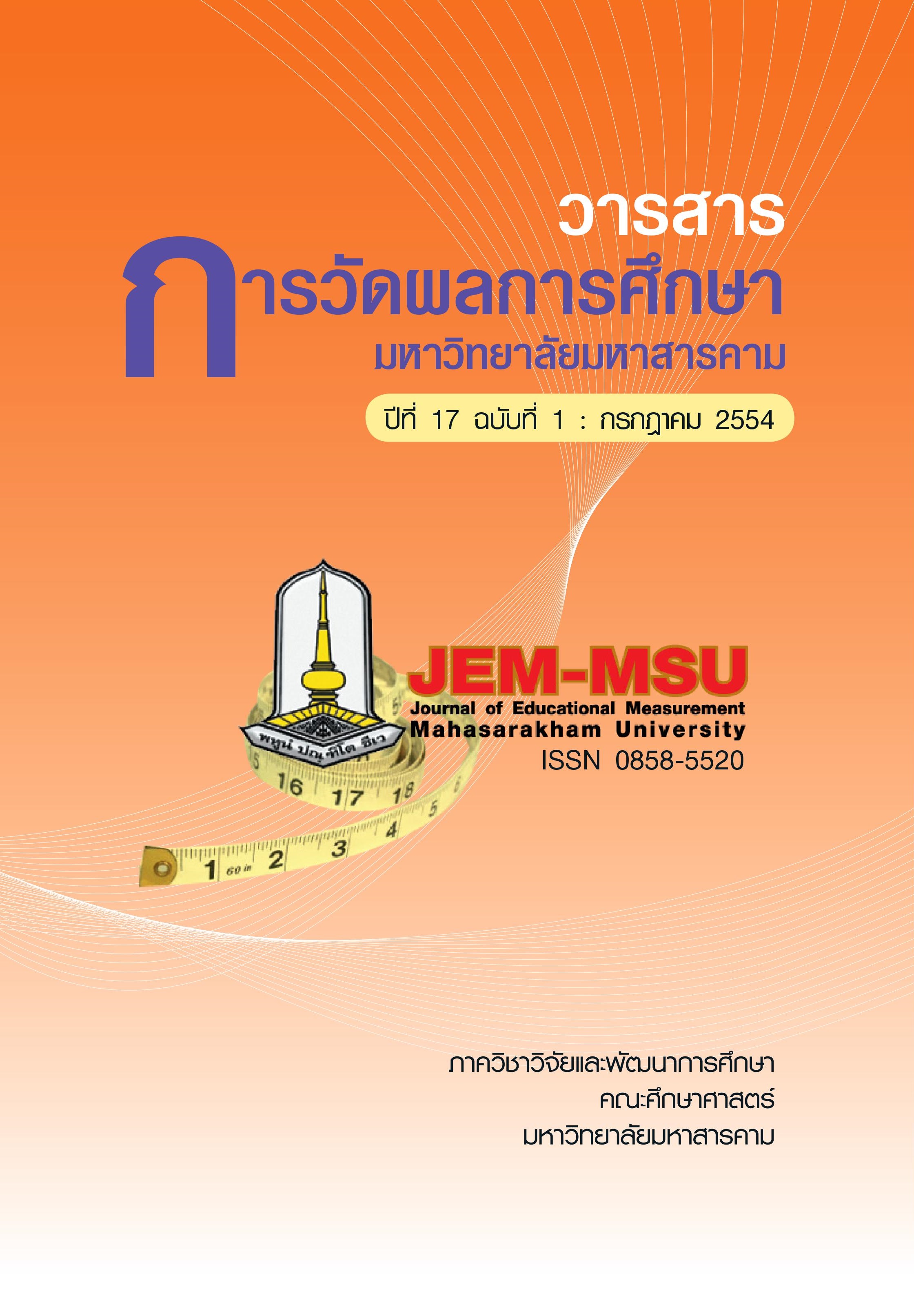A Synthesis of Research on Instruction Methods Which Affect Analytical Thinking of student in Basic Education Level by Using Meta-Analysis
Main Article Content
Abstract
Analytical thinking development to be higher which implement are many instruction
methods in learning-teaching to increase the effectiveness. Many researchers have conducted
research studies instruction methods which affect analytical thinking. Their study fnding are
both congruent and argumentative with one another. In order to attain a conclusion from
these research study fnding relating to instruction methods which affect analytical thinking,
this study thus aimed to synthesis of research on instruction methods which affect analytical
thinking of students on basic education level by using meta-analysis. The research work to be
synthesized in this study were 70 theses at the graduate studies level, Academic and
government agency in Thailand since 2001-2009. Effect size of the research works were
calculated by the use of a meta-analysis based on Glass’s method. The effect sized were
compared by the use of One-way ANOVA and study on interaction by the use of Two- way
ANOVA.
The results of the study were as follows :
1. From the 70 research works involving instruction methods which affect analytical
thinking as synthesized in this study, the following were found. 2007 was the year of most
publication. The research work were derived from the curriculum and instruction feld the
most. Mahasarakham University produced most research works. Type of research was thesis
the most.The subjects areas was studies the most in mathematic. The most studies in
education level 2. The instruction methods which studies the most was constructivism theory
instruction. Data sources were from sample and sample size with select themselves the most.
The samples were selected through the cluster random sampling technique. The studies
were conduced with Matthayomsueksa 2 student the most. Directional hypothesis were used.
Randomized control group pretest–posttest design was used as research model. Two group
of population or sample, each group with 41-70 subject, were used. One independent variable
was instruction methods, two dependent variable was achievement and analytical thinking.
The instrument used for gathering data was a analytical thinking test. The statistics utilized
were mean and standard deviation. The statistics used most for testing hypotheses was t-test
and analysis type was not found the most.
2. The mean effect size of instruction methods which affect analytical thinking at the
different .05 level of signifcance. When multiple comparison was found Technology related
instruction which effect analytical thinking show higher than cooperative learning but pair
other of instruction methods which affect analytical thinking it was not found different.
3. For the interaction between instruction methods and subjects areas, it was not
found to signifcant. For the interaction between instruction methods and Education level it
was not found to signifcant.
In conclusion, the cooperative learning, technology related instruction,
constructivism theory instruction and integrated instruction show higher analytical thinking
than those taught through the conventional instruction approach at the different level of
signifcance. Therefore, teachers should select to use instruction methods to abilities learners
and learning-teaching environment which analytical thinking development to be higher and
apply in your daily life.
Article Details
The content and information contained in the published article in the Journal of Educational Measurement Mahasarakham University represent the opinions and responsibilities of the authors directly. The editorial board of the journal is not necessarily in agreement with or responsible for any of the content.
The articles, data, content, images, etc. that have been published in the Journal of Educational Measurement Mahasarakham University are copyrighted by the journal. If any individual or organization wishes to reproduce or perform any actions involving the entirety or any part of the content, they must obtain written permission from the Journal of Educational Measurement Mahasarakham University.


